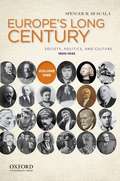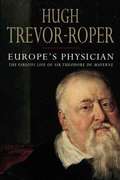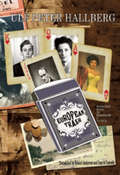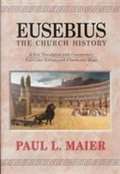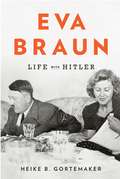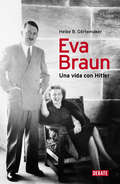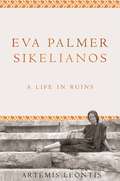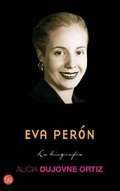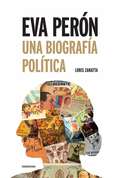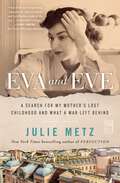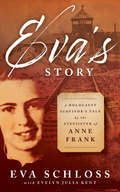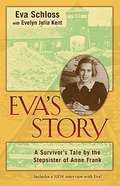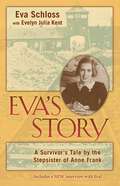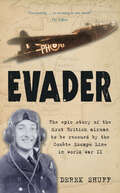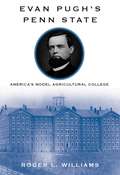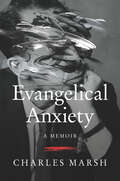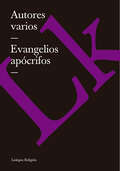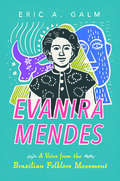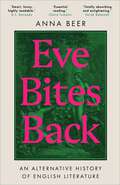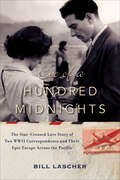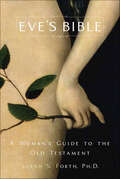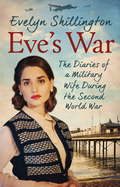- Table View
- List View
Europe's Long Century: Society, Politics, And Culture 1900-1945 Volume 1
by Spencer M. Di ScalaThe twentieth century has been interpreted as a short century marked by extremes. According to this view, the century lasted only from 1914 to 1989 or 1991. These dates coincide with the rise and fall of communism that came to power in Russia in 1917 and ended with the fall of the Berlin wall (1989) or that of the Soviet Union (1991). Thus, the concept of a short century is unduly influenced by a Cold War perspective. In Europe's Long Century, Spencer Di Scala presents an alternative view that will be more helpful to undergraduate history students in the twenty-first-century: namely, that twentieth century Europe was actually a long" century lasting approximately from 1900 to 2000 with patterns and antecedents discernible before the century began and that continue to be elaborated today. Comprehensive, current, and affordable, Europe's Long Century integrates the histories of Eastern Europe, Scandinavia, and the Balkans that are often neglected in similar treatments. It also thoroughly covers the role of science in shaping modern European life, and the book's "biographical sketches" profile the lives of important - though not always well known - people who influenced Europe's long century. "
Europe's Physician: The Life of Sir Theodore de Mayerne, 1573-1655
by Hugh Trevor-RoperThis book reveals the story of the pioneering Swiss Huguenot doctor who mixed medicine with diplomacy, with political intrigue, with secret intelligence, and with artistic interests at the courts first of Henry IV of France and then of James I and Charles I of England.
European History and Its Historians
by Frank Mcgregor Nicholas WrightSome presentations on this topic by contributors at a conference of Australasian historians.
European Trash (Fourteen Ways to Remember a Father)
by Ulf Peter Hallberg Erland Anderson Ingrid CassadyWinner of the 2010 Gerard Bonnier Prize."One of the year's most stimulating reading experiences."-Michel Ekman, Svenska Dagbladet"Ulf Peter Hallberg writes beautifully about both love and trash."-Amelie Björck, Göteborgs-PostenCombining fact and fiction, photographs and quotes, European Trash is a humorous, moving, and elegiac novel that "circles" around the image of the author's father who, through his assemblage of objects, art, and wisdom-collected in his flat in Malmö, Sweden-strives to keep the culture and values that others might call "European Trash" intact.I open the door and walk into my father's empty apartment. Already in the hall I get the feeling that he is still in the kitchen making coffee, quickly turning around to look in my direction. In that unfamiliar silence, visions and memories are released: how he walked toward me with that gleam in his eye, how he pronounced my name, how he inspected me to check my level of fatigue.Ulf Peter Hallberg is a Swedish writer born in Malmö, Sweden, who has lived in Berlin, Germany, since 1983. He is the author of many books, including The Glance of the Flâneur (translated into German and Italian), Grand Tour, Legends & Lies, and European Trash.Erland Anderson has published several books in translation, including Between Darkness, Darkness: Selected Poems by Rolf Aggestam (with Lars Nordstrom, 1989), and Views from a Tuft of Grass by Harry Martinson (2005).Ingrid Cassady is from Stockholm, Sweden, and currently lives in California.
Eusebius: A New Translation with Commentary
by Paul L. Maier EusebiusNext to Josephus, Eusebius is the most widely-consulted reference work on the early church. Much of our knowledge of the first three centuries of Christianity--the terrible persecutions, the courageous martyrs, and the theological controversies--come from the writings of this first century historian.
Eva Braun: Life with Hitler
by Damion Searls Heike B. GortemakerIn this groundbreaking biography of Eva Braun, German historian Heike B. Görtemaker delves into the startlingly neglected historical truth about Adolf Hitler's mistress. More than just the vapid blonde of popular cliché, Eva Braun was a capricious but uncompromising, fiercely loyal companion to Hitler; theirs was a relationship that flew in the face of the Führer's proclamations that Germany was his only bride. Görtemaker paints a portrait of Hitler and Braun's life together with unnerving quotidian detail--Braun chose the movies screened at their mountaintop retreat (propaganda, of course); he dreamed of retiring with her to Linz one day after relinquishing his leadership to a younger man--while weaving their personal relationship throughout the fabric of one of history's most devastating regimes. Though Braun gradually gained an unrivaled power within Hitler's inner circle, her identity was kept a secret during the Third Reich, until the final days of the war. Faithful to the end, Braun committed suicide with Hitler in 1945, two days after their marriage. Through exhaustive research, newly discovered documentation, and anecdotal accounts, Görtemaker has meticulously built a surprising portrait of Hitler's bourgeois existence outside of the public eye. Though Eva Braun had no role in Hitler's policies, she was never as banal as she was previously painted; she was privy to his thoughts, ruled life within his entourage, and held his trust. As horrifying as it is astonishing, Eva Braun will undoubtedly be referenced in all future accounts of this period.
Eva Braun: Una vida con Hitler
by Heike B. GörtemakerLa biografía definitiva de la amante de Hitler que ofrece un retrato íntimo y paralelo de la vida del dictador nazi y del ascenso y caída del régimen que creó. Él era el Führer solitario, el hombre comprometido con una nación: Alemania. Así lo presentaba la propaganda nacionalsocialista, que no dejaba espacio posible para una relación sentimental en la vida de Hitler. Sin embargo, una mujer lo acompañó durante cerca de quince años, en las reuniones decisivas, en los peores momentos, en el Berlín asediado por los soviéticos, en la hora de su muerte. Adolf Hitler tenía una amante cuya existencia permaneció oculta hasta el final del Tercer Reich: Eva Braun. ¿Quién era la mujer con la que se casó Hitler poco antes de su caída? ¿Qué significó para ella vivir con uno de los mayores criminales de la historia? Heike B. Görtemaker ha buscado las respuestas y ha permitido a Eva Braun salir de las sombras para desvelar la intimidad de un dictador durante la época más catastrófica de la historia de Alemania. Reseñas:«Esta biografía de Frau Hitler, la más rigurosa y documentada, cambiará la idea de la rubia tonta impasible ante los asesinatos en masa.»Klaus Wiegrefe «No es posible estar más cerca de Eva Braun.»Die Welt
Eva Palmer Sikelianos: A Life in Ruins
by Artemis LeontisThe first biography of a visionary twentieth-century American performer who devoted her life to the revival of ancient Greek cultureThis is the first biography to tell the fascinating story of Eva Palmer Sikelianos (1874–1952), an American actor, director, composer, and weaver best known for reviving the Delphic Festivals. Yet, as Artemis Leontis reveals, Palmer’s most spectacular performance was her daily revival of ancient Greek life. For almost half a century, dressed in handmade Greek tunics and sandals, she sought to make modern life freer and more beautiful through a creative engagement with the ancients. Along the way, she crossed paths with other seminal modern artists such as Natalie Clifford Barney, Renée Vivien, Isadora Duncan, Susan Glaspell, George Cram Cook, Richard Strauss, Dimitri Mitropoulos, Nikos Kazantzakis, George Seferis, Henry Miller, Paul Robeson, and Ted Shawn.Brilliant and gorgeous, with floor-length auburn hair, Palmer was a wealthy New York debutante who studied Greek at Bryn Mawr College before turning her back on conventional society to live a lesbian life in Paris. She later followed Raymond Duncan (brother of Isadora) and his wife to Greece and married the Greek poet Angelos Sikelianos in 1907. With single-minded purpose, Palmer re-created ancient art forms, staging Greek tragedy with her own choreography, costumes, and even music. Having exhausted her inheritance, she returned to the United States in 1933, was blacklisted for criticizing American imperialism during the Cold War, and was barred from returning to Greece until just before her death.Drawing on hundreds of newly discovered letters and featuring many previously unpublished photographs, this biography vividly re-creates the unforgettable story of a remarkable nonconformist whom one contemporary described as “the only ancient Greek I ever knew.”
Eva Perón. La biografía
by Alicia Dujovne OrtizEntre la santidad y el escándalo, la figura de Eva Perón ha marcado para siempre la historia de este siglo. Alcanzada por el prestigio controvertido de Juan Perón, ha logrado trascenderlo para acceder a la estatura de un mito que brilla con luz propia. Más allá de la versión que la condena a una beatitud inconmovible, y del prejuicio que la congela en la imagen de una arribista, la vida real de Eva tiene los ingredientes de un melodrama y las incógnitas de una novela policial. En esta biografía abierta, desprejuiciada y rigurosa, Alicia Dujovne Ortiz nos acerca magistralmente a las peripecias de una mujer que, desde su origen humilde, alcanzó el raro privilegio de vivir para siempre en la memoria colectiva.
Eva Perón: Una biografía política
by Loris ZanattaEl prestigioso historiador italiano, especialista en historia de Américalatina y fundamentalmente en peronismo e iglesia argentina, analiza conlucidez y valentía la herencia política que la figura de Eva Perón tuvopara el movimiento justicialista y las encrucijadas que, tras su muerte,debió enfrentar su líder, Juan Domingo Perón. Lejos de la imagen glamorosa y romántica que muchos estudios históricoscolaboraron a construir, Zanatta sostiene, por ejemplo, que la relaciónde Eva con Perón -no era de subordinación ni de dependencia, como muchosse obstinan en afirmar, sino de inevitable y creciente competencia-.Lejos también de la versión canónica sobre la caída de Perón, el autorafirma que -de ninguna manera se trató de que el régimen perdiera fuerzapor no contar ya con la presencia de ella, sino que más bien Perón cayóporque había terminado siendo el prisionero de la herencia política queella le había dejado-. Zanatta analiza un aspecto poco abordado, como esla relación de Evita con la Iglesia Católica, que, según él, funcionócomo una barrera de contención para conciliar a la clase obrera con elcristianismo y neutralizar al comunismo en la Argentina. Según él, elperonismo de Evita fue «una religión secular, con sus dogmas y susdevotos», que cuestionó en sus fundamentos más profundos las relacionesentre modernidad y tradición, política y religión, legitimidad popular ydemocracia.
Eva and Eve: A Search for My Mother's Lost Childhood and What a War Left Behind
by Julie MetzThe author of the New York Times bestselling memoir Perfection returns with an unforgettable account of her late mother&’s childhood in Nazi-occupied Austria and the parallels she sees in present-day America. To Julie Metz, her mother, Eve, was the quintessential New Yorker. Eve rarely spoke about her childhood and it was difficult to imagine her living anywhere else except Manhattan, where she could be found attending Carnegie Hall and the Metropolitan Opera or inspecting a round of French triple crème at Zabar&’s. In truth, Eve had endured a harrowing childhood in Nazi-occupied Vienna. After her mother passed, Julie discovered a keepsake book filled with farewell notes from friends and relatives addressed to a ten-year-old girl named Eva. This long-hidden memento was the first clue to the secret pain that Julie&’s mother had carried as a refugee and immigrant, shining a light on a family that had to persevere at every turn to escape the antisemitism and xenophobia that threatened their survival. Interweaving personal memoir and family history, Eva and Eve vividly traces one woman&’s search for her mother&’s lost childhood while revealing the resilience of our forebears and the sacrifices that ordinary people are called to make during history&’s darkest hours.
Eva's Story: A Holocaust Survivor's Tale by the Stepsister of Anne Frank
by Eva SchlossPeople around the world know the tragic story of Anne Frank, the teenage girl who lost her life in a concentration camp during the Holocaust. But most people don't know about Eva Schloss, Anne&’s playmate and posthumous stepsister. Though Eva, like Anne, was imprisoned in Auschwitz at the age of 15, her story did not end there. Together with her mother, Eva endured daily degradation and countless miseries at the hands of the Nazis. She was freed in 1945, but it would be decades before Eva was able to share her survivor&’s tale with the world.Concluding with new discussion questions and a revealing interview with Eva, this moving memoir recounts—without bitterness or hatred—the horrors of war, the love between mother and daughter, and the strength and determination that helped a family overcome danger and tragedy.
Eva's Story: A Survivor's Tale by the Stepsister of Anne Frank
by Eva Schloss Evelyn Julia KentMany know the tragic story of Anne Frank, the teen whose life ended at Auschwitz during the Holocaust. But most people don’t know about Eva Schloss, Anne’s playmate and stepsister. Though Eva, like Anne, was taken to Auschwitz at the age of 15, her story did not end there. / This incredible memoir recounts — without bitterness or hatred —the horrors of war, the love between mother and daughter, and the strength and determination that helped a family overcome danger and tragedy.
Eva's Story: A Survivor's Tale by the Stepsister of Anne Frank
by Eva Schloss Evelyn Julia KentMany know the tragic story of Anne Frank, the teen whose life ended at Auschwitz during the Holocaust. But most people don&’t know about Eva Schloss, Anne&’s playmate and stepsister. Though Eva, like Anne, was taken to Auschwitz at the age of 15, her story did not end there. / This incredible memoir recounts — without bitterness or hatred —the horrors of war, the love between mother and daughter, and the strength and determination that helped a family overcome danger and tragedy.
Evader: The Epic Story of the First British Airman to be Rescued by the Comete Escape Line in World War II
by Derek ShuffIn 1941 air gunner Sergeant Jack Newton’s Wellington is hit by flak on his first bombing raid over Germany. Miraculously, the skipper makes an emergency landing on a German-occupied Belgian airfield, narrowly avoiding Antwerp Cathedral. Having torched the plane, the crew give the unsuspecting Germans the slip and are hidden by the Resistance. Hoping to make it to the coast and back across the Channel, the airmen are surprised when the 23-year-old female leader of the Comete Escape Line, Andree de Jongh – codenamed Dedee – has other plans for them. Full of terrifying and humorous moments, this is the story of the epic journey of the first British airman to escape occupied Europe during the Second World War.
Evan Pugh’s Penn State: America’s Model Agricultural College
by Roger L. WilliamsWhen Evan Pugh became the first president of Pennsylvania’s Farmers’ High School—later to be known as The Pennsylvania State University—the small campus was in disrepair and in dire need of leadership. Pugh was young, barely into his 30s, but he was energetic, educated, and visionary. During his tenure as president he molded the school into a model institution of its kind: America’s first scientifically based agricultural college.In this volume, Roger Williams gives Pugh his first book-length biographical treatment. Williams recounts Pugh’s short life and impressive career, from his early days studying science in the United States and Europe to his fellowship in the London Chemical Society, during which he laid the foundations of the modern ammonium nitrate fertilizer industry, and back to Pennsylvania, where he set about developing “upon the soil of Pennsylvania the best agricultural college in the world” and worked to build an American academic system mirroring Germany’s state-sponsored agricultural colleges. This last goal came to fruition with the passage of the Morrill Act in 1862, just two years prior to Pugh’s death. Drawing on the scientist-academic administrator’s own writings and taking a wide focus on the history of higher education during his lifetime, Evan Pugh’s Penn State tells the compelling story of Pugh’s advocacy and success on behalf of both Penn State and land-grant colleges nationwide.Despite his short life and career, Evan Pugh’s vision for Penn State made him a leader in higher education. This engaging biography restores Pugh to his rightful place in the history of scientific agriculture and education in the United States.
Evangelical Anxiety: A Memoir
by Charles MarshIn this riveting spiritual memoir, the writer, scholar, and commentator tells the story of his struggles with mental illness, explores the void between the Christian faith and scientific treatment, and forges a path toward reconciling these divergent worlds.For years, Charles Marsh suffered panic attacks and debilitating anxiety. As an Evangelical Christian, he was taught to trust in the power of God and His will. While his Christian community resisted therapy and personal introspection, Marsh eventually knew he needed help. To alleviate his suffering, he made the bold decision to seek medical treatment and underwent years of psychoanalysis. In this riveting spiritual memoir, Marsh tells the story of his struggle to find peace and the dramatic, inspiring transformation that redefined his life and his faith. He examines the tensions between faith and science and reflects on how his own experiences offer hope for bridging the gap between the two. Honest and revealing, Marsh traces the roots of shame, examines Christian notions of sex, faith, and mental illness and their genesis, and chronicles how he redefined his beliefs and rebuilt his relationship with his community. A poignant and vital story of deep soul work, Evangelical Anxiety helps us look beyond the stigma that leaves too many people in pain and offers people of faith a way forward to find the help they need while remaining true to their beliefs.
Evangelios apócrifos
by LinkguaThe Apocryphal Gospels were written in the first centuries of Christianity and relate stories about Jesus, which contain episodes that were omitted from the canonical texts. They were not accepted by the Catholic Orthodoxy, and among them are found the Dead Sea Scrolls and the texts of Nag Hammadi. They were given the name "Gospels" for their qualities which are similar to the four Gospels admitted into the canon of the New Testament. However, many of them do not have an evangelical style. Some of these writings appeared in gnostic communities with the intention of containing hidden words (or "apokryphos" in Greek). And it should be mentioned that the term apocryphal did not indicate falsehood but mystery. These messages, hidden between the discussions and attributed to Christ, were reserved for the people who were initiated into those communities.Los Evangelios apócrifos fueron escritos en los primeros siglos del cristianismo y cuentan historias relativas a Jesús, que contienen episodios omitidos en los textos canónicos. No fueron aceptados por la ortodoxia católica, y entre ellos se encuentran los rollos del mar muerto y los de Nag Hammadi. Se les dio el nombre de Evangelios por su aspecto similar a los cuatro evangelios admitidos en el canon del Nuevo Testamento. Sin embargo, muchos de ellos no tienen un estilo evangélico. Algunos de estos escritos aparecieron en comunidades gnósticas, con la intención de contener palabras ocultas (en griego, apokryphos). Y cabe comentar que el término apócrifo no indicaba en sus orígenes falsedad sino misterio. Estos mensajes, ocultos entre los discursos y atribuidos a Cristo, estaban reservados a los iniciados en esas comunidades.
Evanira Mendes: A Voice from the Brazilian Folklore Movement
by Eric A. GalmThis compilation of Evanira Mendes’s biography and translated publications offers for the first time in English an opportunity to revisit the music and culture of 1950s Brazil. Examining the trajectory of the Brazilian folklore movement, this book provides a new perspective on contemporary accounts that have overlooked the participation of women scholars from that era and seeks to grant Mendes the recognition she so richly deserves. Growing up on a farm in rural São Paulo State, Evanira Mendes (1929–2022) exhibited an early love of folklore, cultivated through the stories, songs, and gossip of wandering travelers in exchange for food and shelter. As she got older, she entered the Conservatório Dramático e Musical de São Paulo to study piano, but her love of folklore persisted, and she was invited to work in the school’s folklore archive and later as a folklore researcher for the São Paulo Folklore Commission from 1949 to 1959. There, she won awards including the national Sílvio Romero Medal; won second place in a national folklore monograph competition; helped to organize the folklore pavilion at the IV° Centenário de São Paulo celebration; and worked closely with important names of the era. Despite these accomplishments, she has essentially been forgotten. This book follows Evanira Mendes’s experiences working as a field researcher as part of the São Paulo Folklore Commission, her participation and organization at national and international folklore conferences, her participatory research in Afro-Brazilian community dances and observation and critique of Brazilian modern artistic expression in the theaters of São Paulo, and her work as editor of the folklore page and later weekly columnist in the Correio Paulistano newspaper. Her first-person accounts of fieldwork and participation in folklore courses are supplemented by separate published accounts from various sources, helping to compile a comprehensive portrait of music and culture in São Paulo and Brazil from that era.
Eve Bites Back: An Alternative History of English Literature
by Anna BeerWarned not to write – and certainly not to bite – these women put pen to paper anyway and wrote themselves into history. From the fourteenth century through to the present day, women who write have been understood as mad, undisciplined or dangerous. Female writers have always had to find ways to overcome or challenge these beliefs. Some were cautious and discreet, some didn&’t give a damn, but all lived complex, eventful and often controversial lives. Eve Bites Back places the female contemporaries of Chaucer, Shakespeare and Milton centre stage in the history of literature in English, uncovering stories of dangerous liaisons and daring adventures. From Julian of Norwich, Margery Kempe, Aemilia Lanyer and Anne Bradstreet, to Aphra Behn, Mary Wortley Montagu, Jane Austen and Mary Elizabeth Braddon, these are the women who dared to write.
Eve of a Hundred Midnights: The Star-Crossed Love Story of Two WWII Correspondents and Their Epic Escape Across the Pacific
by Bill LascherThe unforgettable true story of two married journalists on an island-hopping run for their lives across the Pacific after the Fall of Manila during World War II—a saga of love, adventure, and danger.On New Year’s Eve, 1941, just three weeks after the attack on Pearl Harbor, the Japanese were bombing the Philippine capital of Manila, where journalists Mel and Annalee Jacoby had married just a month earlier. The couple had worked in China as members of a tight community of foreign correspondents with close ties to Chinese leaders; if captured by invading Japanese troops, they were certain to be executed. Racing to the docks just before midnight, they barely escaped on a freighter—the beginning of a tumultuous journey that would take them from one island outpost to another. While keeping ahead of the approaching Japanese, Mel and Annalee covered the harrowing war in the Pacific Theater—two of only a handful of valiant and dedicated journalists reporting from the region.Supported by deep historical research, extensive interviews, and the Jacobys’ personal letters, Bill Lascher recreates the Jacobys’ thrilling odyssey and their love affair with the Far East and one another. Bringing to light their compelling personal stories and their professional life together, Eve of a Hundred Midnights is a tale of an unquenchable thirst for adventure, of daring reportage at great personal risk, and of an enduring romance that blossomed in the shadow of war.
Eve's Bible: A Woman's Guide to the Old Testament
by Sarah S. ForthEve's Bible is for every woman who has ever said, "I've always wanted to read the Bible but . . ."Whatever the reason--"it's too complicated, too big, too old, too many men and too few women, and anyway, I don't know whether I believe it or not"--Eve's Bible helps readers explore the Old Testament regardless of religious affiliation.Eve's Bible challenges conventional ideas about women in the Bible, and shows readers how to draw upon their own truth to interpret the Bible in new and liberating ways.With Eve's Bible as their companion, readers will:* Recognize and read the Old Testament's literary building blocks* Learn how women in the biblical era lived* Learn why the biblical Deity is such a complex character* Derive meaning from scripture by balancing left-brained inquiry with heart-felt intuition*Become their own authority on the BibleA friendly guide that anticipates readers' questions and concerns, Eve's Bible helps readers find their way through the Bible with intelligence and verve.
Eve's Hollywood
by Holly Brubach Eve BabitzJournalist, party girl, bookworm, artist, muse: by the time she'd hit thirty, Eve Babitz had played all of these roles. Immortalized as the nude beauty facing down Duchamp and as one of Ed Ruscha's Five 1965 Girlfriends, Babitz's first book showed her to be a razor-sharp writer with tales of her own. Eve's Hollywood is an album of vivid snapshots of Southern California's haute bohemians, of outrageously beautiful high-school ingenues and enviably tattooed Chicanas, of rock stars sleeping it off at the Chateau Marmont. And though Babitz's prose might appear careening, she's in control as she takes us on a ride through an LA of perpetual delight, from a joint serving the perfect taquito, to the corner of La Brea and Sunset where we make eye contact with a roller-skating hooker, to the Watts Towers. This "daughter of the wasteland" is here to show us that her city is no wasteland at all but a glowing landscape of swaying fruit trees and blooming bougainvillea, buffeted by earthquakes and the Santa Ana winds--and every bit as seductive as she is.
Eve's War: The diaries of a military wife during the second world war
by Barbara Fox Evelyn ShillingtonTHE DIARIES OF A MILITARY WIFE DURING THE SECOND WORLD WARIn 1935, Evelyn Shillington started a diary, little knowing the years of turmoil it would cover, and how insightful her experiences as an army wife would be to the following generations.Eve joined her beloved husband, Captain Rex Shillington, on his postings, giving her a unique view into army life. Through the abdication crisis, to the turbulent years of the WWII and ending in war-ravaged Italy, Eve documented it all with an inimitable spirit and brave humour.The diaries lay forgotten in an attic for years until an enterprising antiques dealer discovered them by chance. Published seventy years after Eve wrote in her diary for the last time, they offer a fascinating first-hand account into life on the home front.Readers love EVE'S WAR:'Enlightening and well written''What a brilliant read''Such an interesting account and in great detail too''It's a book you just want to carry on reading'
Evel Knievel: An American Hero
by Ace CollinsRobert "Evel" Knievel is one of the most unique heroes to earn a place in the collective psyche of this country. A high school dropout, an award-winning athlete, a petty thief, a motorcycle racer, and a political activist, Knievel earned his nickname because of his unlawful activities early in his life but rode that name to fame by consistently tempting death in the public eye. With a showman's panache and a madman's daring, he has risen-along with the likes of James Dean and Marilyn Monroe-past mere celebrity to the exalted level of American icon. Today, at sixty-two years of age, Evel still makes headlines, proving that the appeal of daredevil never dies. From his recent liver transplant to his son Robbie's jump off the Grand Canyon to his very public support of mandatory helmet laws, Knievel remains foremost in the minds of his millions of fans. Evel Knievel stands as a truly perfect example of a certain uniquely American aesthetic, one in which pride and heart can overcome any circumstances at all.
